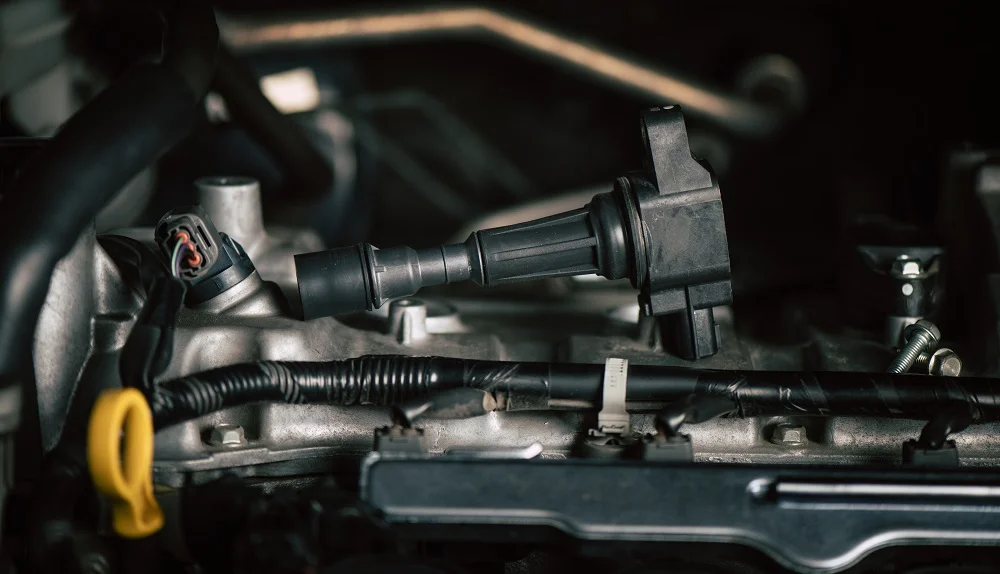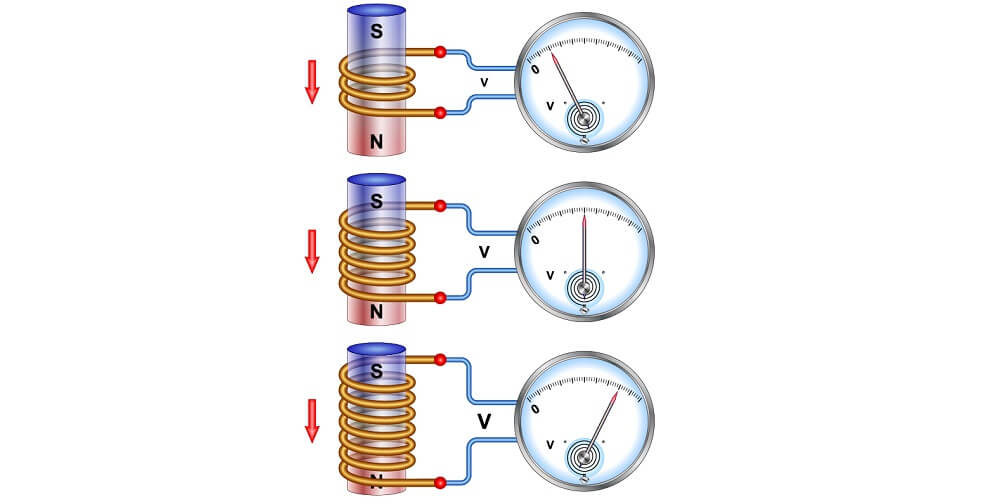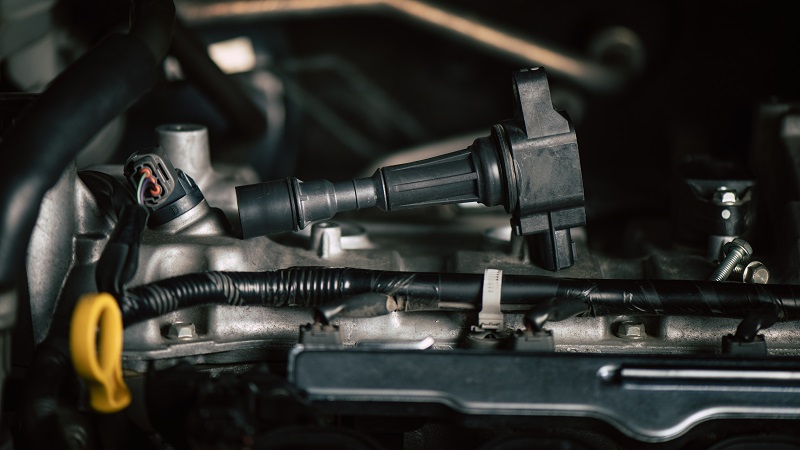Is your BMW not running properly? Are you noticing symptoms such as backfires and poor gas mileage? Then you might want to look at your ignition coil. BMW’s affinity for ignition coils is a story as old as time. Luckily, things have gotten better with the later generations of cars from this Bavarian giant. Still, if you own a BMW that has some miles on it, especially something like a straight-six E46 3-series, there’s a decent chance that you’ll be replacing at least one ignition coil while you own that car.
Fortunately, troubleshooting ignition coils isn’t too complicated. We’ve put together an extensive guide that will arm you with all the information necessary to understand why your ignition coil has failed and how to troubleshoot which coil is giving you trouble. That way, if your car suddenly starts to misfire one morning, you’ll know where to look first.

What Is an Ignition Coil?
The ignition coil is part of the system of a gasoline engine that quite literally gives the engine its spark. The spark, as you may be aware, is crucial for combustion. No matter what vehicle it is in, the ignition coil works with the spark plugs to facilitate the exact amount of spark required by an engine. The basic principle of an ignition coil, which is to boost voltage, hasn’t changed since its inception, but it has evolved over the years.
Speaking of evolution, the original ignition coil was a cylindrical unit that we refer to as a can-type coil. While it’s obsolete now, it can still be found on some classic vehicles including the popular E30 3-Series. This type of ignition coil can be found in vehicles with distributors. Since then, there have been a few evolutions that have proven to be advantageous.
However, the most modern design is the coil-on-plug system. It’s also the most relevant one in the world of BMWs which is why this guide is based around it. Benefits of coil-on-plug design include a lower risk of power loss as it’s installed directly on the spark plug among other things.
Different Types of Ignition Coils

Ignition coils are mainly divided into five types – can-type or conventional ignition coil, electronic ignition coil, distributor-less ignition coil, and coil on plug ignition coil.
Can-Type Ignition Coil
As mentioned the can-type or conventional coil is among the oldest in the evolution of ignition coils. It works with a distributor to produce the increased spark required by the engine. These coils are still seen today on BMWs from the 1980s.
Electronic Ignition Coil
After being around for a long time, can-type ignition coils were starting to get replaced by electronic ones. While this ignition coil was comparable to the can-type one, it made use of a pickup coil to signal the control module instead of depending on the distributor for that task. That certainly improved its reliability, but it still relies on the distributor shaft.
Distributor-Less Ignition Coil
A distributor-less ignition coil eliminates the need for the old-school distributor. It works with the help of a magnetic triggering device that gives it information like the engine speed. It’s with this information that it produces the spark necessary. This type of ignition coil is said to be more efficient when it comes to energy production.
Coil on Plug Ignition Coil
The coil on plug ignition coil is the other type we spoke about earlier. It has become the most widely used system and is found in most vehicles today including BMW’s past and current line-up.
When compared to the distributor-less ignition system, it is capable of producing more spark as each cylinder gets its coil instead of being shared by two cylinders. Its compact design also means that it takes up little space in the engine bay.
How Does an Ignition Coil Work?

An ignition coil is a transformer and works on the principles of electromagnetic induction. Every BMW and most vehicles, in general, come equipped with 12V batteries which can only produce so much voltage. 12V coming from a battery is nowhere near enough to create a spark. It’s the ignition coil that comes in and transforms the 12V supply to the thousands (up to 75,000) of volts required.
An ignition coil manages this as it is an electromagnetic inductor that uses two wire coils which are on the receiving end of lower voltage direct current. It then takes this current through the primary and secondary coil to generate the higher voltage spark.
Despite each type of ignition coil using a slightly different design to produce voltage, the fundamentals remain the same. This discharge produced by ignition coils is sent to the spark plug which ignites the air-fuel mixture inside the combustion chamber.
Ignition Coil Maintenance – How Often Should You Replace It?
The replacement interval of BMW ignition coils depends on your driving style. Ignition coils have evolved over the years and the ones found on BMWs of today are of the coil-on-plug type. It’s also the most relevant and widely used type of ignition coil, but it still shares the same basic principles as the other types of ignition coils, thereby sharing points of failure.
The most common causes for ignition coil failure on BMWs are heat and vibration. While a coil can take on a tremendous amount of heat it’s either super high temperatures or multiple heat cycles over an extended period that leads to failure. It’s a similar problem when it comes to vibration where a coil can handle quite a bit but goes bad when exposed to an excessive amount. Vibration can damage the coil winding and the insulation.

While not as common, an ignition coil can also fail because of moisture and connector pin-related problems. Both issues are self-explanatory and there’s not much that can be done to avoid them.
Like we mentioned above, heat and vibration are the main causes for ignition coil failure, and the intensity of both changes with driving style. If you are one to push your BMW to its limit, it’s safer to replace your ignition coil as early as every 30,000 miles. On the other hand, if you drive sedately and avoid higher load scenarios, you could manage closer to 100,000 miles before needing a replacement.
Which Ignition Coils for BMW?
There are many brands of ignition coils out there that will fit your BMW. However, we recommend that you stick to Bosch, Delphi, and Eldor.
These brands are OEM and are recommended by BMW themselves. Something like a Bosch 0221504800 coil or Bosch 0221504470 will give you peace of mind and many trouble-free miles. We’ve put together a more in-depth piece on recommended BMW ignition coils (N52 engine and newer) where we discuss why sticking to these three brands is the norm these days.
But wait, what about cheap eBay coils? As tempting as they are, using cheap eBay ignition coils, or cheap aftermarket ones is asking for trouble. A good portion of the most popular BMW engines generally tends to make quick work of quality ignition coils, let alone cheap aftermarket ones. Stick to OEM and you’ll be fine.
What Are The Symptoms of a Failing Ignition Coil?
A failing ignition coil will show symptoms like backfires, stalling, and more. Here are the most common ones. Before we go any further though, it’s important to know that these symptoms can be caused by other problems as well. So if you notice any of them, start with the ignition coils but don’t be surprised if the coils are fine. It can happen.

Backfires
Modern vehicles only backfire when unburned fuel exits the combustion chamber and is ignited by the glowing hot exhaust. With how efficient modern engines are, it’s highly unusual to notice this on a modern vehicle and implies that something is wrong. Things like spark and fuel are computer-controlled which is why this certainly shouldn’t happen on a modern vehicle.
This is an important symptom because it often occurs in the early stages of ignition coil failure. So if you notice backfires from your BMW, don’t delay fixing it as it can affect multiple components including your expensive catalytic converter.
Check Engine Light
BMWs are considered to be quite well-equipped in terms of electronics, like most European vehicles. This is why a failing ignition coil will almost always trigger the check engine light on your dashboard. Bimmers, much like most other modern cars, have a dedicated error code for ignition coil malfunction which will make it easier to diagnose. This information can be obtained via a scan tool.
Starting Troubles
A failing ignition coil will struggle to produce the same amount of voltage as one that’s in good shape. Many times this weak amount of voltage isn’t sufficient to trigger combustion and the engine will fail to turn over. While this symptom is common for several other problems, it’s a good idea to start your troubleshooting process by inspecting the coils first.
Vehicle Stalling
A vehicle needs a constant supply of sufficient voltage to run and not just at startup. Consequently, if it’s lacking in that department owing to a failing ignition coil, it will result in your engine stalling. If you notice this symptom and the one where the vehicle has trouble starting, it’s recommended to avoid driving until the issue is fixed as it could leave you stranded.
Lower Gas Mileage
Another symptom that we made a mention of early on in this guide was lower gas mileage. This one shouldn’t come as a surprise when you put those pesky backfires into consideration. It’s not only the backfiring that reduces gas mileage.
A failing ignition coil will also not be able to provide enough voltage and the engine will begin using more gas to compensate. If you notice a drop in gas mileage that’s come out of nowhere, it can be considered as a symptom of a failing ignition coil.
How to Troubleshoot an Ignition Coil
Troubleshooting an ignition coil is easy and all it can be done with, or without the use of specialized tools.

Swap Places
The easiest way to diagnose a failing ignition coil is by swapping the one you think is faulty with one that isn’t. This can be done before you buy a replacement (i.e. moving a coil from cylinder 1 to cylinder 2 etc.)
To make this process quicker, identify which coil is the one that’s failing by unplugging each one individually while the vehicle is running. If the sound of the idling engines changes when you unplug the coil, it’s not the faulty one. However, if it doesn’t change, that will most likely be the cause of the problem.
Multimeter or Ohmmeter
Another method to test an ignition coil is with the help of an ohmmeter. If it’s a multimeter you are using, set it to the ohms function. Assess the coil’s primary and secondary resistance and if either of the values is out of specs, replace it with a new unit.
Spark Testing
You can also test an ignition coil with the help of a spark tester. Spark testers are easily available and quite inexpensive. These testers are designed to fit between the output end of the ignition coil and the input end of the spark plug. Once it’s between the two, you are required to crank the engine and if there’s a spark or light in the tester, the ignition coil in question is not at fault.
Bench Testing
Finally, you could also put the ignition coil through a bench tester. This is the most professional way of going about the diagnosis as it involves requiring a specialty tool. A bench tester will simulate the running process of an ignition coil to determine inaccuracies when it comes to its input and output readings. This method is a surefire way of troubleshooting an ignition coil.
Looking for a Replacement Ignition Coil?
It’s a known fact that an ignition coil has a longer service interval, but that can change for a variety of reasons as we mentioned above. It’s also highly recommended to view an ignition coil as a consumable.
This will ensure that you’ll never end up facing any of the serious symptoms. Additionally, if your vehicle is equipped with a coil-on-plug type, you should swap out the entire set for peace of mind. You can find quality OEM ignition coils for your BMW in our Shop section.





